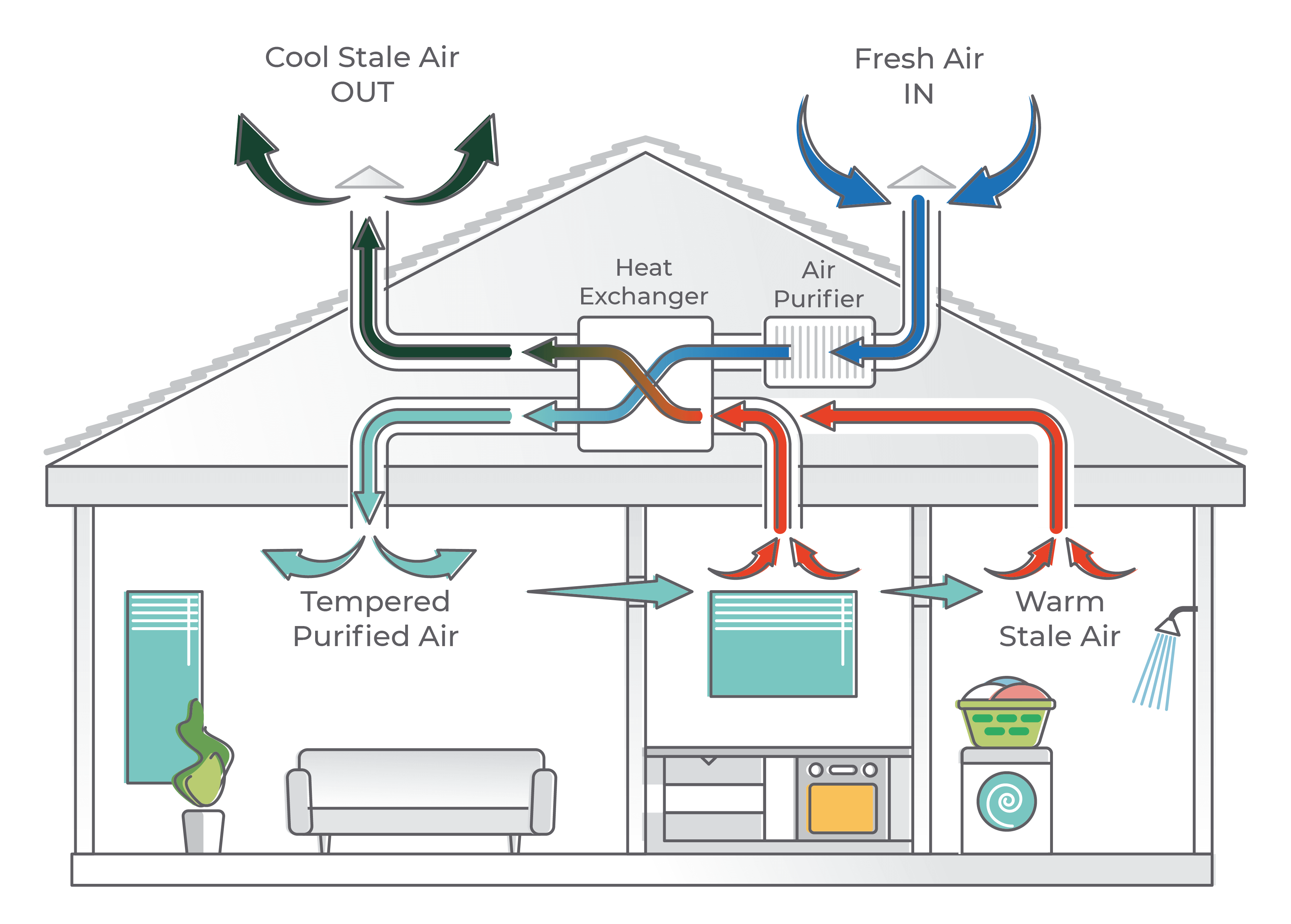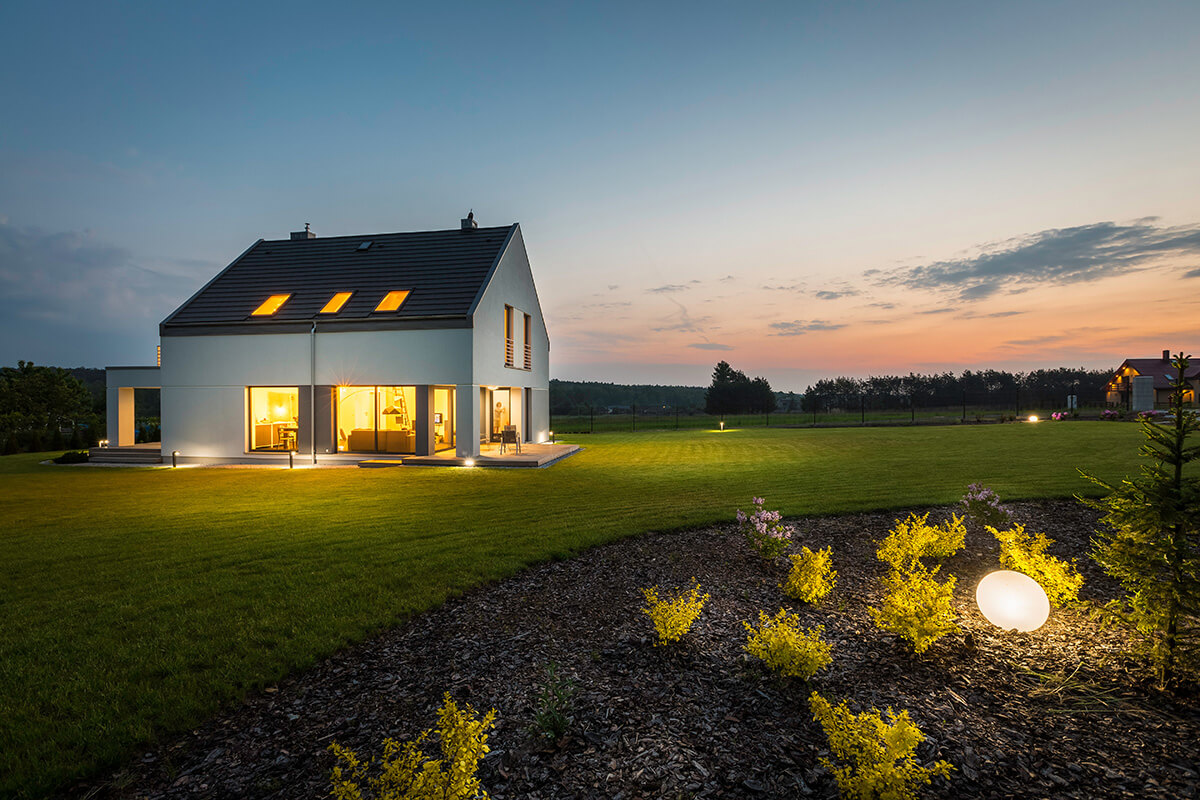Mechanical Ventilation with Heat Recovery – MVHR
Re-use the heat you generate in your home and keep out harmful pollutants with a smart, silent and reliable MVHR system
What is MVHR?
A Mechanical Ventilation with Heat Recovery, or MVHR system, recovers the hot, damp air generated from warm and wet rooms such as the kitchen and bathrooms and passes the recovered air through a heat exchanger The recovered heat is used to warm the fresh, filtered air drawn in from outside, which is then distributed throughout the house.
The fresh air drawn in from the outside is filtered before being warmed up in the heat exchanger, removing PM2.5 particulates, dust, insects and leaf debris, as well as nitrogen oxides (NOx) gasses if a suitable gas filter is included in the MVHR system.
For a modern eco-building which has been designed to be quiet, comfortable, and very energy efficient, an MVHR system is the only viable ventilation solution. MVHR is mandatory for a Passivhaus or any house which is airtight and close to Passivhaus standard.

With an MVHR system the incoming air is heated for free using energy generated by the heat recovered from hot and damp rooms such as kitchens and bathrooms. By re-cycling the heat generated in these hot and wet rooms, your heating system will only need to lift the indoor temperature by a few degrees to a comfortable temperature of around 21oC instead of from zero to 21oC. Every room in the house, apart from the hall, stairs and landing, has either an air supply or an extract duct installed while the air direction is controlled by air pressure as supplying warmed fresh filtered air into a bedroom increases pressure, while extracting it from a bathroom decreases it so as the pressure equalises the air flows from dry rooms to wet rooms.
Cooling with MVHR
A cooling coil can be fitted to an MVHR system that cools the air drawn in from the outside to lower the temperature of the whole house. With cooling designed into the system from the outset, with a higher ventilation capacity and fully insulated air-supply pipes, MVHR cooling should be capable of reducing room temperatures by around 5oC.
Trickle Vents
Air drawn into your home through traditional trickle vents will be completely unfiltered and will mean a constant intake of cold air to be warmed up by your heating system. A 200 sqm house could have as much as 2,400 cubic metres per hour of cold, damp, polluted air drawn in through trickle vents on a windy day, which will have a big impact on the cost of heating.
Suitable properties
Heat pumps can be fitted to most types of residential property, and work best with low temperature heating systems, such as underfloor heating. For a ground source heat pump, you’ll need enough space in your garden to install ground loop piping laid in a trench around a metre deep or a borehole can be drilled to accommodate the ground loop if there is insufficient space.

Useful websites
Solarcrest – for an indepth look at MVHR
Check out the level of air pollution where you live
The Case for MVHR’ by the Passivhaus Trust
How do Passive House buildings stay comfortable in summer?
